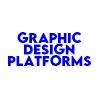Know Great Career Opportunities in the Growing Design Industry

Blog Post
The graphic design industry is growing at a rapid pace. According to research by the Bureau of Labor Statistics, this sector in India is expected to rise by 5% by 2026. Read on to discover more! #ThinkWithNiche
Design as a career is ever-growing. With the ever-growing craze of fashion blogging and influence in India, the youngsters are getting curious about fashion as a career prospect. The post covid era has witnessed a spectacular rise in social media users, basically converting almost everything to digital media, thus making the students learn a lot about these specific career options. The pandemic has made digital media essential for every brand. The fashion industry works with people possessing many different talents. They need writers and strategists, designers, animators, and photographers. Design by itself encompasses a vast area. Consider the future taking into account elements, such as a change in industry trends and megatrends. This method allows us to imagine possible and desirable futures, which can help us make strategic decisions.
Do you know how many visual effects artists worked on the hit film Avatar?
Well, the most costly Hollywood film ever was brought to life by Prime Focus, an Indian visual effects business with a workforce of 1200 people, 700 of whom were based in India. That's not the case! The conclusion of Avengers: End Game was created by 14,000 visual effects artists over 16 weeks, which will amaze you.
Can you imagine how big this ever-growing sector is?
Let's get started!
Let us first define "design" before moving on to choosing a design career. There are numerous definitions of design, but it is important to remember that it is more than just a pretty piece of art. It's the lingo used to communicate brands, objects, and concepts. A design, on the other hand, should never fail. The demand for the design workforce is because a successful design demands the skills of qualified personnel. We didn't have enough competent people with design sensibility up until now, and businesses didn't value design as highly as it could have been. The competition is driving us to recognize the importance of design and to effortlessly incorporate it into everything we create. There is no reason to expect a downturn in the sector or to believe that the interest in design is a fad. For both men and women, it will now be a solid and robust professional alternative.
Because creativity knows no bounds, staying current and productive all of the time, virtually daily, is a problem. That is one component of consistency in outstanding production that most applicants and their families are concerned about, as they believe the day will come when more and more new designers will replace the existing ones and seize the competitive field. Fears like this are unfounded if designers retain an open mind and are always looking for new ways to innovate. Since the conception of design, there has been a steady increase in demand. Let's take a step back. Although the history of design may be traced back to the cavemen, genuine graphic design began with Johannes Gutenberg's creation of the printing machine in 1440. In the late 1400s, the first logos appeared, and in 1620, the first print advertisement appeared. It wasn't long before businesses realized the value of graphic design, resulting in the founding of Austria's first graphic design agency, Wiener Werkstatte. The design has grown mainstream in the digital age, influencing our daily lives and decisions.
There’s something I’d like to bring into light “ the need for design and designing for need.”
Understanding the past and present of design is unquestionably important in the success of a product, brand, or concept. People, brands, governments, entertainment sectors, and others have all accommodated design at the center as a result of the recent recognition, acceptance, and realization of the value of design. Mobile phones, IoT devices, Augmented reality, Virtual reality, and other brilliant inventions have all resulted from the design of tangible or intangible things. eCommerce, Web design, Mobile App design, Gaming, Filming, Print design, Product design, digital design, and more are all examples of design applications today, each requiring its own set of abilities. Design is essential in any industry to streamline processes, reduce time, promote efficiency, improve infrastructure, increase conversion rates, and increase profitability and success.
In reality, the global design service market reached $153.2 billion in 2018, with a compound annual growth rate (CAGR) of 11.6 percent since 2014, and is expected to reach over $249.5 billion by 2022, with a CAGR of 13 percent. The design services market encompasses sales of industrial, graphic, and fashion design services, as well as related goods, by businesses, sole traders, and partnerships that plan, execute and administer design projects based on the needs of their clients.
Furthermore, from 2016 to 2021, the global graphic design industry grew at a rate of 0.4 percent each year on average. It is currently the 72nd largest industry, with the Global Business Activities industry ranking 9th in terms of market size. In India, the design sector is experiencing substantial expansion. According to reports, the field in India is growing at a pace of 23 to 25% every year. Having said that, India now has a demand for approximately 60,000 people to work in the fields of industrial design, graphic design, communication, and packaging design. Unfortunately, India currently has only 7,000 qualified designers.
Automobiles, information technology, fashion, hospitality, retail, media/publishing firms, education, real estate, and the government all have a high demand for UI/UX Designers, Fashion Designers, Interior Designers, Animation Designers, and Graphic Designers. In the recent decade, the fields of user experience, user interface, and interaction design have grown significantly, and remuneration has risen in tandem with demand for these skills. The appearance and feel of an app or website have become just as important as its usefulness, which is great news for consumers and designers alike!
Understanding the numerous parts of the market and the various design specialties available to you, on the other hand, can be difficult. In this blog, we'll look at many specialties, such as graphic design, VFX, UI/UX, web design, and development, in which you might pursue a career.
Let us look at some of the stats in 5 key design roles in India and globally.
The graphic design industry is growing at a rapid pace. According to research by the Bureau of Labor Statistics, this sector in India is expected to rise by 5% by 2026. Advertising agencies, print media companies, digital marketing services organizations, IT companies, manufacturing and packaging companies, design studios, publishing houses, game development companies, and many others today need graphic designers on their teams. Above all, based on years of experience and skill level, the average income of a graphic designer in India might range from 3 lakh to 9 lakh per year. Graphic designers' work prospects in the field of computer system design will grow by 20% globally by 2026. India's animation industry is steadily growing. By 2023, the number of animator employment in this industry is predicted to grow from 30,000 in 2017 to 4.4 lakh. An animator's typical monthly income in India ranges from Rs. 8000 to Rs. 40000 per month, depending on their level of experience. According to a survey by Grand View Research Inc., the global 3D animation industry market is predicted to reach $39.96 billion by 2028, with a CAGR of 11.7 percent. As the preceding data demonstrate, VFX, or visual effects, is another popular style of animation. Working in visual effects can lead to opportunities at prominent studios like Disney, Pixar, Dreamworks, and others.
VFX artists create photorealistic, digitally generated visuals. This purpose involves the seamless integration of these effects into live-action in feature films, television, and, increasingly, online and console gaming. VFX artists use cutting-edge technology to produce computer-generated creatures, crowds, and stunt doubles. There are also digital particle effects, which include fluid and fire effects, as well as material and light manipulation. Interior design is gaining popularity in India. According to a survey published by MarketWatch interior design, this business is expected to rise by 8.5 percent by 2025. Furthermore, positions in interior design will expand by 13% over the next ten years. The typical salary for an interior designer ranges from Rs. 4 lakh to Rs. 30 lakh per year. The worldwide interior design market is estimated to reach $24.13 billion by 2025, growing at a rate of 4%.
As a game designer, you'll bring concepts, build prototypes, provide interactive narration, and develop the game's mechanics. You'll design systems that are easy to maintain, grow, and use while also providing a pleasant user experience. To develop, test, and build your concepts, you'll need a combination of technical and artistic talents. Games exist in a variety of forms and platforms, including mobile, virtual and augmented reality, console, and PC, and you'll need a combination of technical and aesthetic talents. Programmers, game artists, animators, and quality assurance testers make up a multidisciplinary team that includes game designers. In this decade, the fashion design business hopes to develop to Rs. 1000 crores from Rs. 180 crores. In India, a fashion designer's starting income ranges from 15,000 INR to 40,000 INR per month. With a projected CAGR of 8.93%, the worldwide fashion design and production software market is expected to reach $3.8 billion by 2026.
In most mobile or online application designs we see, a UI/UX designer plays a significant role. The fact that India has a digital economy of 1.3 billion people can be used to estimate growth. A UI/UX designer's annual compensation averages 6 lakh and can reach 10 lakh depending on experience. The global UI/UX business is expected to reach $10 billion by 2022, according to NelsonHall, with a CAGR of 15.4 percent. Bridging the gap between human creativity and the needs of the design, media, manufacturing, and entertainment industries by imparting the necessary design, software, and professional skills – transforming design students into job-ready design professionals who satisfy the industries' constant appetite for meaningful and proactive contributing talent. All of the above statistics indicate that there will be a significant increase in design employment roles. There has never been a better time to start thinking about a design profession. A successful design profession necessitates the development of new talents. Today, content is at the heart of everything, and our goal is to develop experts in the field of creative content. It might be difficult to get a foot in the door of the fashion industry. It's a cutthroat world out there, where smart creatives and sassy strategists must collaborate to keep up with rapidly shifting trends and a demanding audience with too many options. Fashion employment, on the other hand, can be very appealing to young, creative university graduates whose passion for the business is only matched by their desire to make an impact.
Begin by investigating and doing a thorough examination of the various design aspects. Go for it if you see yourself loving a niche field of design such as branding, packaging, environmental design, UI/UX, web design, textiles, illustration, or photography.
You May Like
EDITOR’S CHOICE












